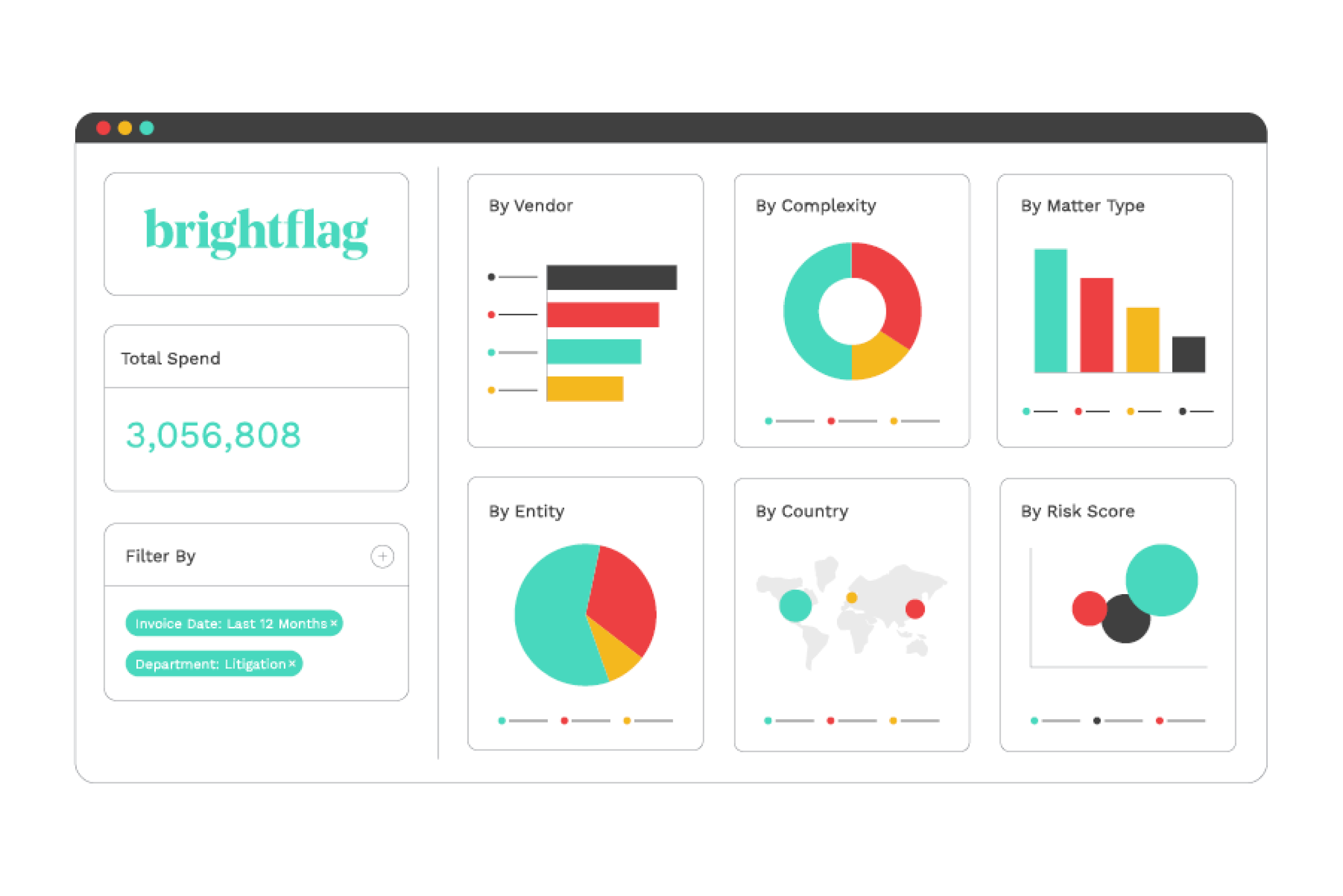Immediate insight into spend
Intuitive dashboards show you what’s driving spend, and AI-generated data gives you unprecedented insight into legal costs
Reports on any data point with Brightflag’s easy-to-use report builder, and schedule exports for regular email delivery

Benchmark key metrics
Get the data you need to set and track spend, workload, and vendor performance metrics
Access industry benchmarks on timekeeper rates and discounts, tailored to your company size and work profile
Use data for strategic change
Your Customer Sucess Manager works with you to set spend management goals and helps you continuously improve over time
Consolidate your panel of legal providers, set AFAs, and create an effective cost-control program
Trusted by legal leaders at:

Get the answers you need.
Experience Brightflag’s legal spend analytics with your own data.

 Validated Reviewer
Validated Reviewer